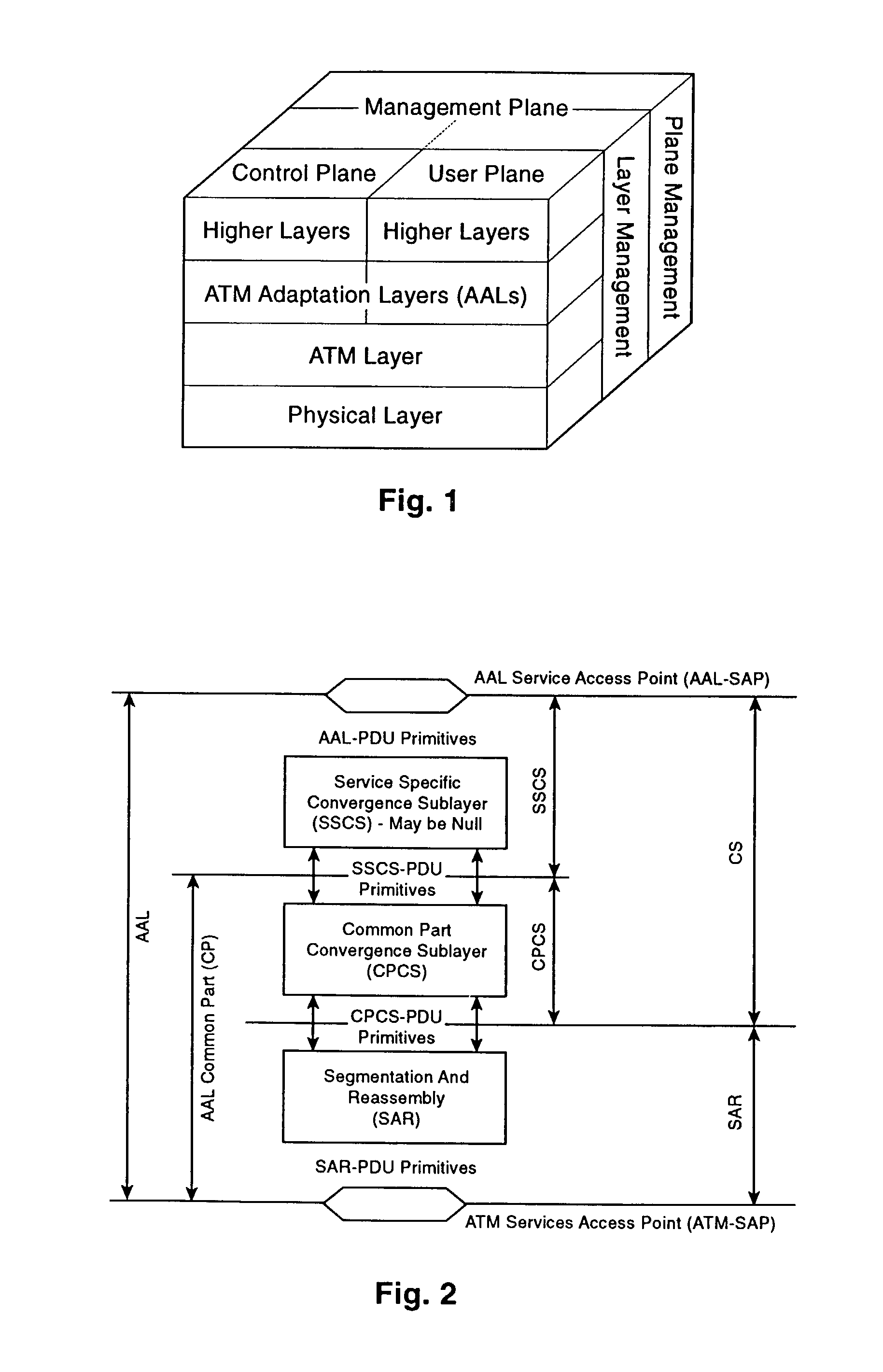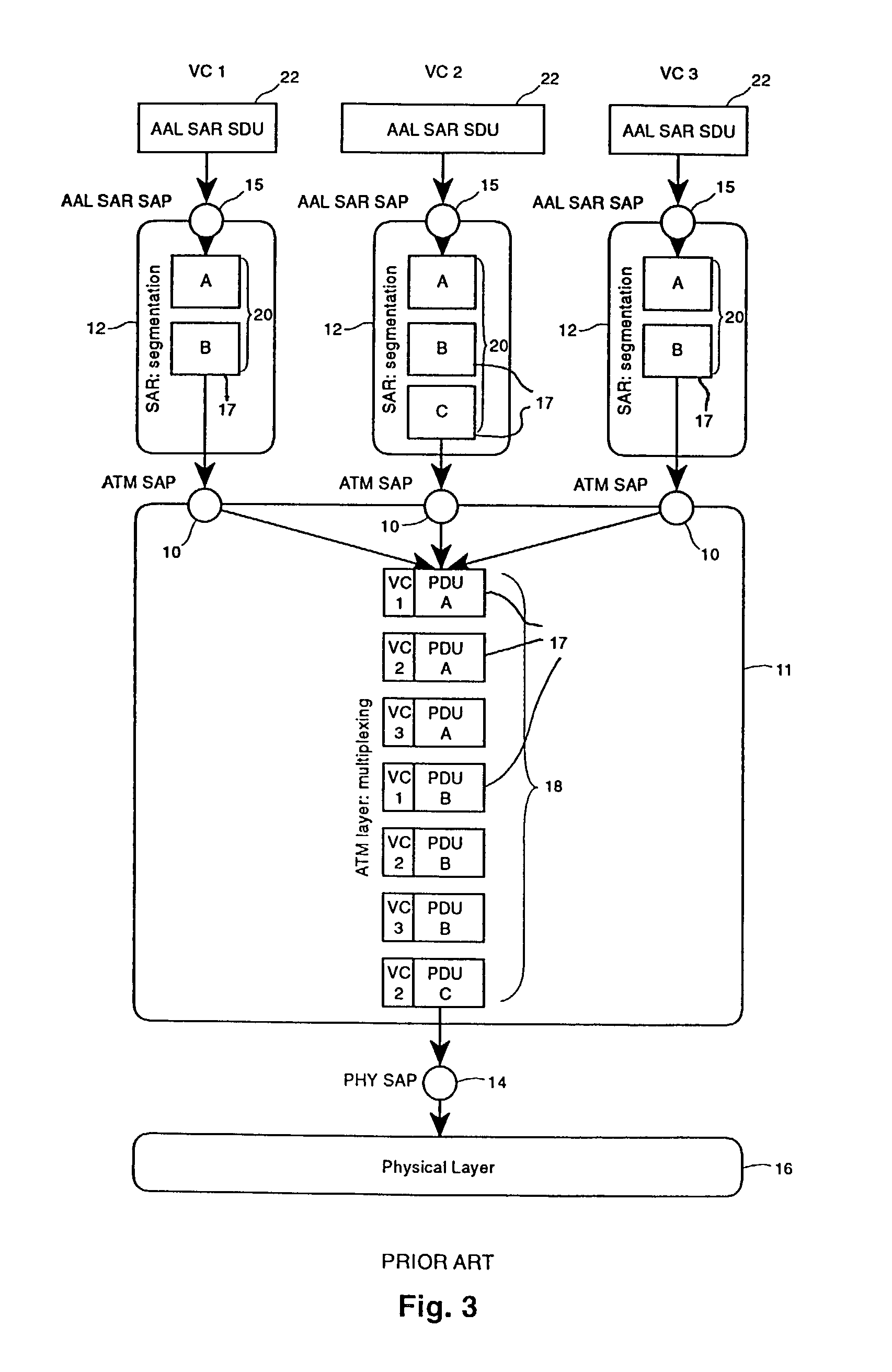ATM adaption layer traffic scheduling
a technology of adaption layer and traffic scheduling, applied in transmission systems, transmission, time-division multiplexing selection, etc., can solve the problems of not being optimal with respect to the average amount of latency experienced per unit of sdu data, and not being able to observe the physical movement of the joystick, so as to minimize the interleaving of data units
- Summary
- Abstract
- Description
- Claims
- Application Information
AI Technical Summary
Benefits of technology
Problems solved by technology
Method used
Image
Examples
Embodiment Construction
[0037]The detailed description is divided into two parts. The first part discloses a preferred embodiment for minimizing the average latency per unit of AAL SDU data in relation to ATM service classes such as the available bit rate (ABR) and unspecified bit rate (UBR) service categories which are characterized by a peak cell rate (PCR) traffic management parameter. The second part discloses a preferred embodiment for minimizing the average latency per unit of AAL SDU data in relation to ATM service classes such as non-real-time VBR which are characterized by peak cell rate (PCR), sustained cell rate (SCR), and maximum burst size (MBS) traffic management parameters. As will become apparent, the second embodiment builds upon the first embodiment.
Service Classed Characterized by PCR
[0038]FIG. 5 illustrates the structure of an AAL in accordance with the preferred embodiment. In addition to the known SAR layer 12 and CS layer 13 (which is not explicitly shown in FIG. 3), the preferred A...
PUM
 Login to View More
Login to View More Abstract
Description
Claims
Application Information
 Login to View More
Login to View More - R&D
- Intellectual Property
- Life Sciences
- Materials
- Tech Scout
- Unparalleled Data Quality
- Higher Quality Content
- 60% Fewer Hallucinations
Browse by: Latest US Patents, China's latest patents, Technical Efficacy Thesaurus, Application Domain, Technology Topic, Popular Technical Reports.
© 2025 PatSnap. All rights reserved.Legal|Privacy policy|Modern Slavery Act Transparency Statement|Sitemap|About US| Contact US: help@patsnap.com



